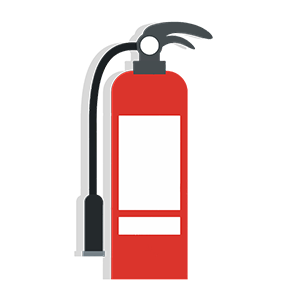 Happy Holidays to you and yours from all of us here at Scurich Insurance Services. 🙂
Happy Holidays to you and yours from all of us here at Scurich Insurance Services. 🙂
Whether you received valuable collectibles or heirloom jewelry, you’ll want to insure these holiday presents. Your homeowners or renters insurance policy may provide coverage for some of your new items, but anything above the existing coverage limit requires a personal articles floater. Consider specific gifts that you’ll want to insure this year.
Jewelry: Your homeowners insurance policy should cover jewelry valued at less than $2,000. However, appraised jewelry that’s more valuable will require a floater.
Furs: From a real fur jacket to a fake fur-trimmed hat, add any furs you receive to your homeowners insurance policy.
Fine Art: Paintings, sculptures, rare books, manuscripts, ornamental collectibles, glasses and antique furniture fall under the fine art category. Record these items and their value on an itemized schedule attached to your insurance policy.
Electronics: Laptops, cameras, TVs and other electronic devices, plus telescopes, video recording equipment and films, are typically included in your existing homeowners or renters insurance policy. If these items are high-end, consider a floater.
Coins or Stamps: Depending on their value, you’ll want to add a floater for new coins or stamps in your collection.
Musical Instruments: List any musical instruments, including sound equipment, on a floater.
China, Crystal or Silverware: List these items on a schedule and include the insurance coverage amount.
Guns: List and describe each gun on a schedule. Include the value.
Sporting Goods: Bicycles, golf equipment, guns and other sporting goods fall under your existing insurance policy unless they’re collectible, rare or expensive.
Tools: Insured under your homeowners or renters policy, your new tools won’t need a floater unless they exceed the value of your existing coverage.
As with everything in your home inventory, record a detailed description, serial number, purchase date, value and picture of your new holiday presents. Store copies of this information with your insurance policy in a fireproof safe and in a secure location other than your home.
Go ahead and enjoy your new holiday presents. Just remember to check with your insurance agent to be sure they’re covered.
Read more

Christmas isn’t the same without lights. Strands of sparkling lights can be hazardous, though, if you forget to follow safety tips as you hang, plug in, store and enjoy these holiday essentials.
Buy lights that are safety tested. Lights without an Underwriters Laboratory (UL) tag may be unsafe to plug in and use.
Inspect lights and plug them in before hanging them. This visual assessment exposes fire hazards like cracked, loose or broken bulbs and frayed, chewed or broken cords. It also lets you replace burnt out bulbs and ensure all the bulbs are the same wattage. After repairing any problems, plug in the lights to ensure the bulbs work and the strands work properly.
Separate indoor and outdoor lights. Strands designed for indoor use should not be hung outdoors because their thin insulation is easily damaged when exposed to cold, wet outdoor conditions.
Hang lights with insulated hooks. Staples, tacks or nails can pierce the strands and cause dangerous electrical shorts and increase the fire risk.
Use extension cords properly. Plug no more than three strands of lights into each extension cord, lay rather than coil extension cords and use only outdoor certified extension cords for your outdoor lights. If the cords feel hot, unplug the lights for a while to reduce fire risk.
Turn off lights before you go to bed or leave the house. Otherwise, the hot lights could start a fire, and you will be asleep or away from home and unable to intervene.
Water the tree regularly. A dry tree and hot lights are an unsafe combination.
Store lights properly to prevent damage and simplify decorating next year. Instead of stuffing them in a box, carefully wind the light strands, secure them with twist ties and store them in plastic bags. Alternatively, wrap the strands around a paper towel tube and thread the ends through the tube’s hollow center.
Hanging lights is a fun and festive holiday tradition. With these safety tips, you have peace of mind as you enjoy your sparkling home all season.
Read more
With the upcoming holidays, your house is going to be filled with guests. Is your pantry filled and your bathroom clean? Even more importantly, update your home insurance policy as you prepare to welcome guests to your home for the holidays.

What Does Homeowner’s Insurance Cover?
Most homeowners buy insurance to cover property damages from storms or accidents. It also covers personal property that’s lost, damaged or stolen. Plus, homeowner’s insurance pays for medical treatment or lawsuits associated with injuries people sustain while visiting you.
Make Sure you Have Enough Liability Coverage
You don’t expect accidents to happen in your house, but a visitor could trip over frayed carpet, get food poisoning or fall off the backyard trampoline. Or maybe the traditional Thanksgiving day football game gets rough, and your cousin’s expensive watch breaks, a seasonal storm blows a branch on your friend’s vehicle or the toilet overflows on your uncle’s expensive leather shoes. These injuries and damages are all examples of accidents that liability insurance covers.
Increase Your Coverage Limit
To ensure you have enough liability coverage, check out your policy and talk to your insurance agent. Most policies include a liability coverage limit of $100,000, but you should consider increasing that limit to $300,000 or even $500,000. An accident that affects more than one guest could quickly use up that coverage and leave you with a big bill. The increased coverage limit ensures everyone can receive medical treatment, and it reduces your out-of-pocket expenses if you’re sued.
Buy an Umbrella Policy
An umbrella policy is another insurance product to consider. It adds additional coverage that could be very beneficial as you entertain guests this holiday season.
Because you plan to host holiday guests this year, do more than stock the pantry and clean the bathroom. Update your homeowner’s insurance policy. It gives you peace of mind and prepares you for anything that might happen.
Read more
 Are you planning to welcome trick or treaters to your home this month? Follow 11 steps that prepare your property for safe Halloween fun.
Are you planning to welcome trick or treaters to your home this month? Follow 11 steps that prepare your property for safe Halloween fun.
1. Clean your walkways.
Jack-o-lanterns are cute, but they are also tripping hazards. Remove decorations and all clutter or debris such as toys, yard tools or twigs from your sidewalks, steps and walkways.
2. Clear the yard.
Ideally, kids will stay on the walkway and front porch as they retrieve their candy. However, you will want to clear your yard so curious and excited kids don’t trip on any toys, branches or yard tools.
3. Repair broken sidewalks and steps.
Inspect your entryway and steps carefully. Then repair any broken stepping stones, loose railings or other hazards.
4. Install lighting.
Your front porch light is turned on to welcome trick or treaters, but you may also need additional lighting to ensure safety. Solar-powered walkway lights or a string of lights can illuminate your walkway and porch.
5. Change your location.
Instead of making kids walk up your long driveway or steep steps, stand or sit in a location that’s easy for them to access.
6. Lock doors and windows.
On trick or treat night, your attention is focused on your front door. Lock all the other doors and windows in your house so no one can gain access to your home while you’re out front. Remember to lock your garage and car, too.
7. Secure valuables.
Move your grill, mower and other valuables to the shed or another secure location. With this tip, you prevent potential burglars from adding your home to their future target list.
8. Protect your pets.
Some kids are scared of animals. Also, pets can become startled and bolt or bite when they see strange costumes or dozens of noisy kids. Always secure your pets so they and the kids are safe.
9. Extinguish candles.
Open flames pose a fire hazard. As an alternative, try battery-powered bulbs, or install Halloween-themed covers on your flashlights.
10. Consider allergies when choosing candy.
Many kids are allergic to nuts or dairy. Place a teal pumpkin on your step to show trick or treaters that you offer safe alternatives like books, stickers or toys.
11. Update your property and homeowners’ insurance policies.
Despite your best efforts to promote safety, someone could be injured while on your property. Be sure your property and homeowners’ insurance policies are updated and include adequate coverage.
Trick or treating is a fun family activity. As you give out treats this year, follow these 11 safety tips. They secure your property and reduce your liability risks.
Read more
October is National Fire Safety Month. No matter what type of business you operate, now’s a good time to evaluate your workplace so you can keep your employees safe. Consider taking 11 steps that help you prevent fires this month and year-round.
Organize your Workplace
Poor housekeeping can mean an increase in clutter and fire fuel. Plus, messy hallways and blocked exits, sprinklers or firefighting equipment can hinder escape and rescue efforts. Walk through every part of your building and perform a thorough cleanup.
Maintain Equipment
Machinery, electronics and other equipment can overheat and cause a fire. Maintain all your equipment to prevent this hazard.
Prevent Electrical Hazards
Faulty wiring and other electrical hazards can spark a fire. Perform regular inspections of the entire electrical system and make any repairs immediately.
Store Chemicals Wisely
Flammable chemicals pose a safety risk. Read the Material Safety Data Sheets and labels on each container, then store and use the chemicals properly.
Allow Control Panel Access
You can turn off the electric and reduce this potential fire hazard at the control panel. Ensure the control panel is easily accessible and that key personnel know where it’s located and how to turn off the electric during an emergency.
Stock Fire Extinguishers
Based on your building’s size and occupancy, you must stock a certain number of fire extinguishers. Follow this requirement and inspect the fire extinguishers at least once a year to ensure they remain in proper working order. Also, train every staff member to use the fire extinguishers confidently.
Install Smoke Detectors and Sprinklers
Smoke detectors provide a warning, and a sprinkler system can save your building, equipment and inventory if a fire does start. Install both of these safety features, and inspect them regularly.
Designate Specific Smoking Areas
Require smoking employees and visitors to smoke only in certain areas that are far from chemicals, papers and other flammable materials. Provide ashtray receptacles and stock working fire extinguishers near the designated smoking areas, too.
Clearly Mark Exits
Post emergency exit diagrams where employees can see them. Also, mark every exit with a neon sign, and place reflective tape on the floor and doors.
Perform Regular Fire Drills
Fire drills prepare your employees for a successful evacuation. Conduct these drills regularly.
Update Contact Information
All of your employees should know who to contact during an emergency. The contact list will include the phone numbers for emergency personnel and key employees.
This October, you can celebrate National Fire Prevention Month. Take these 11 steps as you prepare your commercial property to remain safe.
Read more
Around 65 million Americans have high cholesterol, a condition that can affect anyone from young kids to senior adults. September is Cholesterol Education Month, and you can improve your health when you understand the definition of cholesterol and the best ways to prevent high cholesterol. 
What is Cholesterol?
Cholesterol circulates in your blood and resembles wax or fat. It supports metabolic processes, such as cell membrane stabilization, vitamin D formation, and steroid hormone and bile acid production. It While your body makes cholesterol naturally, it’s also found in food. If you make or consume more cholesterol than your body needs, the excess will accumulate in your arteries and narrow those passageways, which could increase your heart disease and stroke risk.
You have good cholesterol (HDL – high-density lipoprotein), bad cholesterol (LDL – low-density lipoprotein) and triglycerides. The lipoproteins carry cholesterol to and from your body’s cells.
- HDL – Removes bad cholesterol as it flows through your bloodstream.
- LDL – Becomes part of the plaque that lines your arteries.
Your cholesterol levels can depend on several factors, including a family history of heart disease, diabetes, or high blood pressure. Smoking, alcohol consumption, stress, and your weight can also affect cholesterol levels.
What are Normal Cholesterol Levels?
The ideal cholesterol level is under 170 mg/dL. Your LDL level should be under 110 mg/dL, and your HDL level should be over 35. Aim for a triglyceride level of under 150 mg/dL. While these numbers are confusing, your doctor can explain them and help you achieve healthy levels.
How do you know if you have High Cholesterol?
You might have high cholesterol and not know it. Visit your doctor for a blood test that shows your cholesterol levels. Typically, adults over the age of 20 should have their cholesterol checked every five years. High-risk children should have their cholesterol checked regularly, too.
How is High Cholesterol Treated?
Often, lifestyle changes can reduce your cholesterol levels. Your doctor may recommend exercise and dietary improvements, such as:
- Engage in two hours and 30 minutes of moderate exercise or one hour and 15 minutes of vigorous physical activity each week.
- Eat more high-fiber food, including fruits, vegetables and whole grains.
- Limit the amount of saturated fat and sugar in the foods and beverages you consume.
- Maintain a healthy weight.
- Quit smoking and lower your alcohol intake.
- Reduce stress.
Your doctor may prescribe medication, too. Statins reduce the amount of cholesterol your body makes and can lower your bad cholesterol levels.
This month, raise your cholesterol awareness levels. Visit your doctor for a cholesterol check, and discuss the steps you can take to achieve a healthy lifestyle that improves your health now and into the future
Read more
 Happy Holidays to you and yours from all of us here at Scurich Insurance Services. 🙂
Happy Holidays to you and yours from all of us here at Scurich Insurance Services. 🙂


 Are you planning to welcome trick or treaters to your home this month? Follow 11 steps that prepare your property for safe Halloween fun.
Are you planning to welcome trick or treaters to your home this month? Follow 11 steps that prepare your property for safe Halloween fun.
